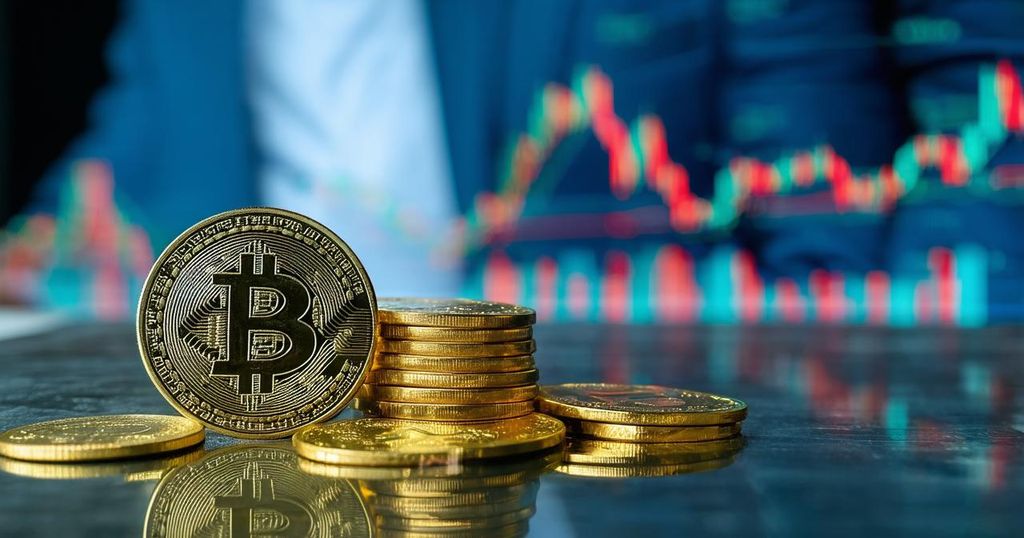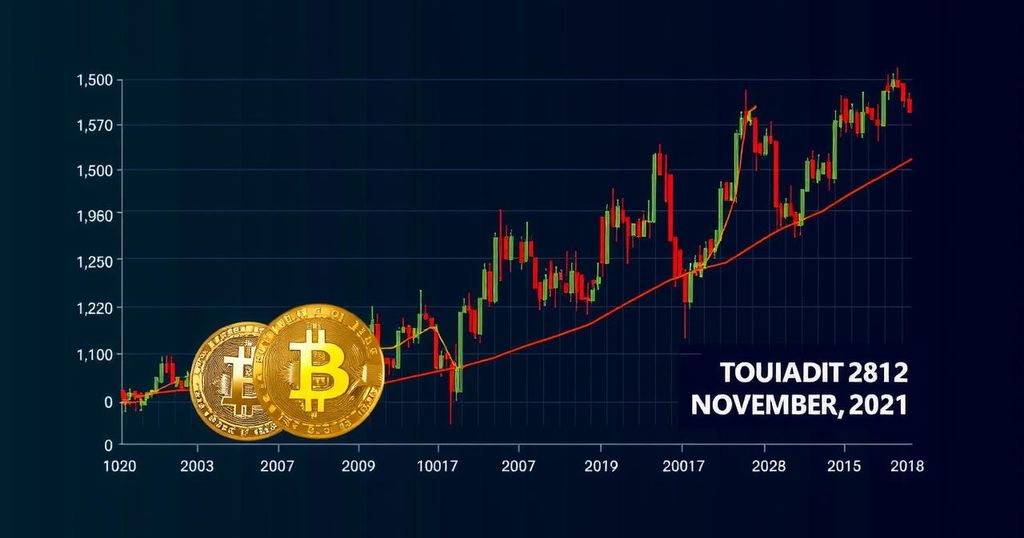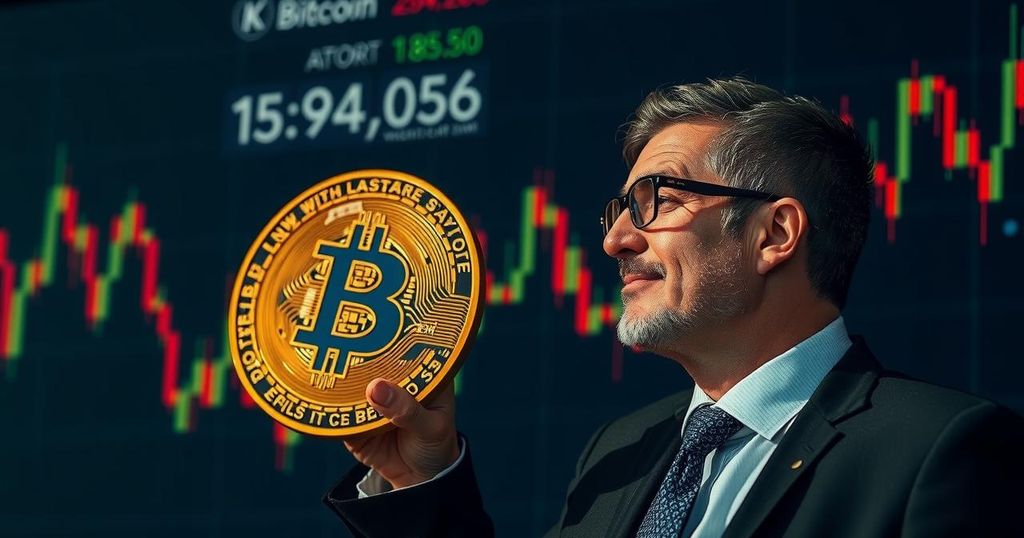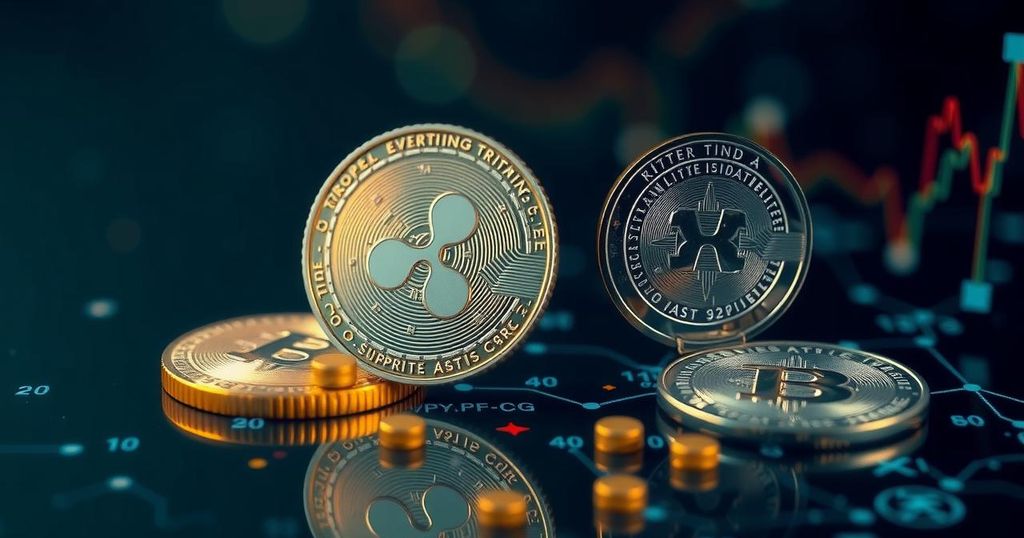Bitcoin Vs. Gold: Experts Draw Parallels in Price Predictions
This article explores the relationship between Bitcoin and gold, emphasizing how gold’s recent price increases could signal a forthcoming breakout for Bitcoin. Analysts highlight historical price movements and current ETF inflows as indicators of potential future trends, with broader market dynamics including the upcoming U.S. election playing a significant role in shaping investor sentiment.
In the ongoing analysis of the cryptocurrency market, Bitcoin’s potential to achieve historic price heights appears correlated with the performance of gold, as suggested by various financial experts. The recent upward trajectory of gold has prompted analysts to consider it as a possible precursor to Bitcoin’s next substantial breakout, as outlined in a report by Coindesk. Since April, Bitcoin has been fluctuating within a substantial range of $50,000 to $70,000. Meanwhile, gold prices have seen a remarkable increase of over 20%, surpassing $2,700, with silver experiencing a notable rise of 43%. These developments mirror the patterns noted in 2020, when the rally of gold ultimately preceded a dramatic surge in Bitcoin’s price. Crypto analyst Noel Saldanha noted, “Bitcoin’s price action has been largely range-bound for months, while gold has continued to push higher. In 2020, Bitcoin didn’t start its significant move until gold’s bullish run began to slow down, suggesting we could see a similar scenario play out.” Historical analysis indicates that late 2020 witnessed gold pulling back from its high of over $2,000 per ounce, precisely as Bitcoin initiated its ascent from $10,000 to upwards of $60,000 by March 2021. This correlation has prompted speculation about Bitcoin’s potential for a similar breakout once gold’s current momentum begins to decelerate. However, the certainty of this pattern repeating remains in question, as gold continues to demonstrate robust demand with minimal signs of a slow down. Factors contributing to the increased valuation of gold include significant inflows into gold-exchange traded funds (ETFs). In the past week alone, inflows into gold ETFs exceeded 1 million ounces, the highest levels observed since October 2022, driven primarily by retail investors via the SPDR Gold Shares (GLD). Conversely, Bitcoin ETFs have also experienced a notable uptick in activity, with U.S. Bitcoin ETF inflows reaching $192.4 million on October 23. The BlackRock iShares Bitcoin Trust (IBIT) represents a substantial portion of this activity, reporting an addition of $317.5 million, thereby raising its net inflows to $23.5 billion. Mr. Saldanha observed, “Bitcoin ETFs are experiencing significant inflows, much like what we’re seeing with gold ETFs. This mirrors the kind of institutional activity that often precedes major price movements in both assets.” Insights from Sui Chung, the CEO of CF Benchmarks, shed light on the characteristics of these Bitcoin ETF inflows, noting that approximately 60% correspond to directional holdings, while the remaining 40% are attributed to basis trades, suggesting a mix of speculative and long-term investment strategies. With increasing market optimism, traders are also wary of the forthcoming U.S. election, which some perceive as a potential catalyst for Bitcoin’s breakout. Following a shift in political sentiment, particularly if a Trump victory appears likely, traders express a growing optimism about a liquidity-driven environment capable of propelling Bitcoin and other risk assets forward. The macroeconomic variables, when examined alongside Bitcoin’s relationship with gold, will be a focal point of discussions at Benzinga’s Future of Digital Assets event scheduled for November 19, wherein industry leaders will analyze how these trends may influence the future landscape of Bitcoin and other digital currencies.
The article discusses the correlation between Bitcoin and gold, particularly focusing on the historical patterns observed between their prices. Analysts are observing the movements of gold as a potential indicator for Bitcoin’s performance, particularly in light of recent trends and market dynamics. The impact of U.S. political developments and the behavior of exchange-traded funds (ETFs) in both gold and Bitcoin markets are also examined, suggesting a broader narrative of potential future price movements for these assets.
In conclusion, Bitcoin’s price trajectory may be significantly linked to gold’s ongoing performance, drawing comparisons to patterns seen in previous market cycles. With strong inflows into both gold and Bitcoin ETFs and an upcoming pivotal U.S. election, market sentiment remains optimistic. While historical trends indicate a possible upcoming breakout for Bitcoin, the certainty of these developments unfolding as expected remains conditional on various macroeconomic factors.
Original Source: www.benzinga.com








Post Comment